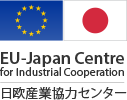

— Latest update: May 2024 —
Japan’s shrinking population means that the market is currently seeing its number of potential consumers steadily diminishing, but it is not to be forgotten that the purchasing power and behaviour of consumers is also of prime importance.
Attracting attention from many enterprises is Japan’s silver market, a group of baby boomers born between 1947 and 1949, causing the demographic shift of the country’s population towards an ageing one of citizens of more than 50 years old.
This segment of the population has boosted new markets, such as those related to health. A noticeable increase in spending on bottled water, organic food and health-promoting teas can be observed in recent years.
Considering the elderly, as mature, conservative consumers with time and money to burn, the opportunities here are significant.
It is also important, on the other hand, to identify the characteristics of the younger generation of consumers in Japan, markedly different from the elderly.
Table of Contents
The EU-Japan Centre currently produces 5 newsletters :









